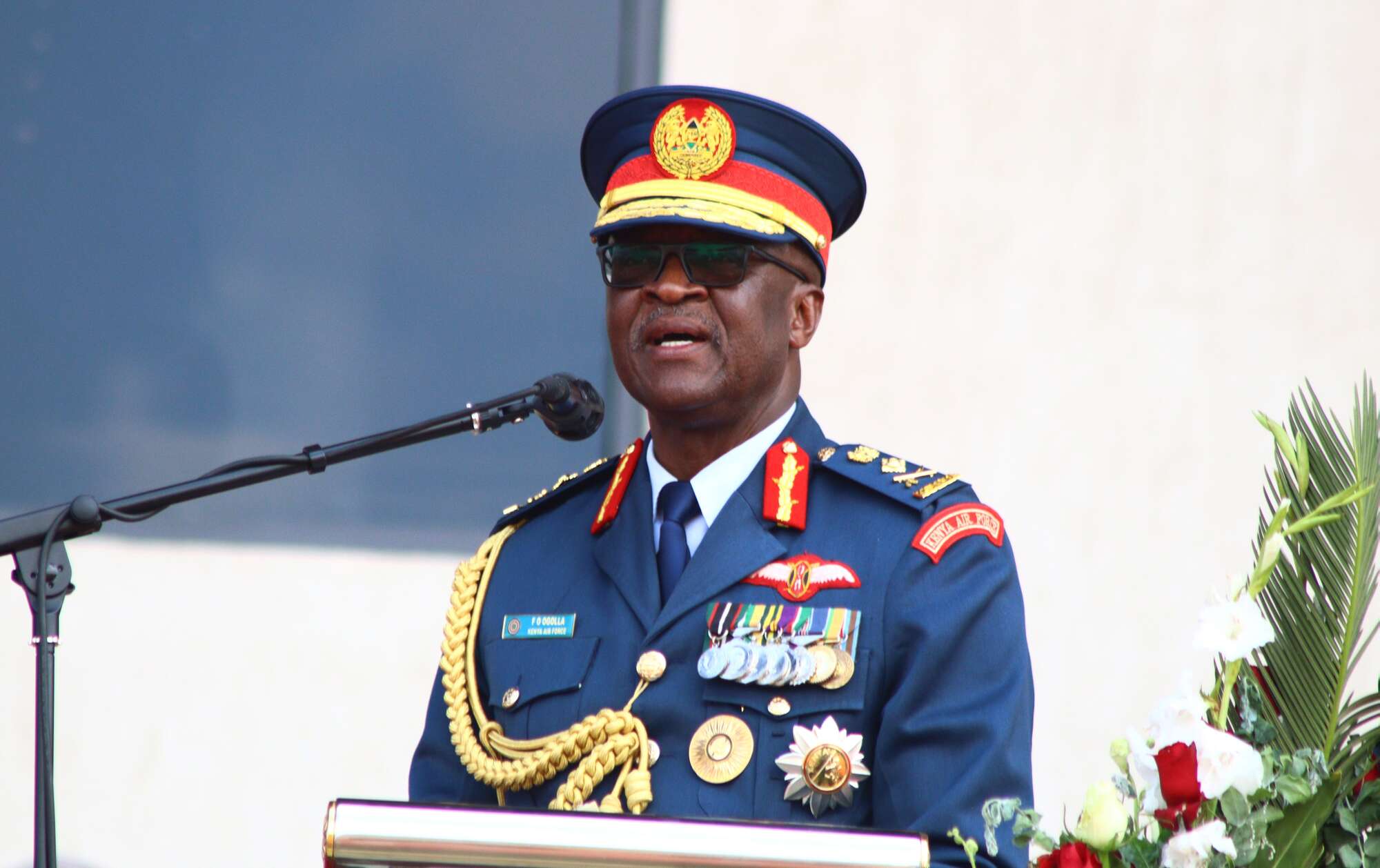How detectives unveiled Shs730m fraud in DFCU bank

Kakooza and the three female staff whose passwords were hacked by the former. ILLUSTRATIONS BY COSMAS ARINITWE.
Kampala- In March 2013, auditors discovered that Shs730 million was missing at dfcu bank and the bank managers reported the matter to Special Investigations Unit (SIU) at Kireka, a Kampala suburb.
A case of embezzlement and financial loss was opened and investigations kicked off. The dfcu bank managers’ statements indicated that funds had been illegally wired in bits from the dfcu accounts at the main branch and sent to accounts of different people, who withdrew it.
The suspicion pointed at three female staff members: Anne Namakula, Kigule Muhwezi and Macrina Amusolo, whose passwords had been used to initiate, approve and authorize the irregular payments. The trio denied the allegations.
They insisted they suspected their colleague, Grace Kakooza Kizza, a teller in the main bank branch, to have been behind the fraud since they had shared with him their passwords.
The SIU detectives arrested Kakooza and interrogated him. Detectives got stuck with the case. There was no evidence in the bank that Kakooza had initiated or approved any payments.
Detectives at SIU were left puzzled. They had no option but to release Kakooza on police bond as they looked for ways of finding the suspects.
No sooner had SIU bosses released Kakooza than the dfcu Bank managers lodged a complaint at the Directorate of Criminal Investigations.
The CID director, Ms Grace Akullo, recalled the file from SIU and assigned two experienced detectives–Inspector Steven Nakube and Assistant Inspector of Police Joshua Muwanga to revisit the investigation and manage the case.
According to court and police documents, after D/IP Nakube and D/AIP Muwanga summoned dfcu Bank managers and interviewed them on how they discovered the fraud, the managers told detectives they discovered the missing funds in an audit that followed a complaint by Sheraton Hotel whose account was irregularly debited $10,000.
The funds had been authorised by Kakooza. When they audited the entire branch, they found a total of Shs730 million missing.
D/IP Nakube ordered the re-arrest of Kakooza and the other implicated bank officials on charges of embezzlement and electronic fraud.
The investigators sought another statement from Kakooza, but he was defiant. He also denied ever used his position to defraud the bank.
He also asked the investigators to show him evidence that he had ever participated in the fraud.
D/IP Nakube and D/AIP Muwanga summoned Anne Namakula, Kigule Muhwezi and Macrina Amusolo whose passwords were used on several occasions to initiate, approve and authorise payments.
Their only defence was that they had shared the passwords with their colleagues whom they suspected to have used them in the fraud.
During interrogation of the three female bankers, D/IP Nakube discovered that one of them had been on sick leave for two months, but her password was still being used to transact business.
Change of approach
The major hurdle was obtaining evidence to pin Kakooza on the crime. The investigators had to change their approach.
They demanded details of the accounts of the beneficiaries of the embezzled funds from the bank managers.
Geoffrey Ssimbwa’s account had been credited Shs100m, Christine Namitala had received Shs250m, Sheila Namanda’s account had been credited Shs150m and Loy Ikiring got Shs5m. Janet Akiteng and Mohammed Kanobe had benefited from the balance.
The investigators took Kakooza for a search of his home. They checked every document, but there was nothing that could lead them to any substantive evidence or exhibit.
During the search, they came across an ATM card bearing the name of Sheila Namanda.
Investigators had hit a jackpot. They took back Kakooza to CID headquarters where he was interrogated about the ATM card. He declined to speak about the issue insisting to be taken to court.
The two detectives obtained Namanda’s contacts and pursued her. In the course of investigation, she told them that she stays at Geoffrey Ssimbwa’s home and that Ssimbwa was a brother of Kakooza. This piece of information helped them make connection between Kakooza and Ssimbwa.
IP Nakube asked Namanda how her ATM card ended up in Kakooza’s home. In the detective’s statement, he said Namanda was evasive. Detectives decided to pile the blame of the loss of Shs730m on her. She fought back and landed into their trap.
She told them that she only received peanuts. To save herself from the troubles, she said Kakooza had even taken the ATM card from her.
He said in his statement that she told him that whenever her account was credited, Kakooza would call her and then she would withdraw the money and hand all of it over to him.
IP Nakube recorded her statement before giving her a police bond.
Hunt intensifies
Investigators hunted the six beneficiaries for days. They apprehended one after another. According to the investigators’ report, they wanted to know details of the beneficiaries to understand who sent them the funds and what they were meant for.
IP Nakube said in his statement that Ikiring made a revelation that turned the investigation on good course.
After she had been arrested, Ikiring told IP Nakube that Kakooza sent Shs5m on her account. She said she had known Kakooza since childhood because they prayed from the same church at Kinawataka in Nakawa Division, Kampala. Kakooza was a friend to her children.
She said Kakooza left the church but later returned when he was driving luxurious vehicles.
Ikiring interacted with him and narrated to him her financial woes.
She said Kakooza promised to bail her out and that he would send the money on her account. She consequently shared details of her account with him.
She told detectives that a week later, her account was credited with Shs5 million and she was upbeat.
IP Nakube discovered that the only person Ikiring knew in dfcu Bank was Kakooza. However, the money sent to her was from the capital account of the bank and three passwords of the female officials had been used in the fraud. There was no trace of Kakooza footprints in the bank fraud.
IP Nakube had got the first person who had a relationship with Kakooza. Ikiring’s statement energised the investigators to look for more beneficiaries. Another beneficiary arrested was Ssimbwa. IP Nakube and AIP Muwanga had earlier got a tip that Ssimbwa was kakooza’s brother.
They threatened him that they were charging him with fraud related offences since he illegally benefitted from the scam. Ssimbwa pleaded with the detectives to spare him.
The detectives gave him a way out. They told him that the only way out was to help in finding evidence pinning the prime suspect. Ssimbwa gave in his brother. He confirmed that Kakooza had sent him money on his account that he withdrew and handed back to him.
He said he never benefitted from the money. With his statement done, he was released on police bond. They turned to the biggest beneficiary, Namitala, whose account had been credited with a whooping Shs250 million.
IP Nakube and AIP Muwanga dug deep into the background of Namitala. Interestingly, they found out that she was also a banker, who had worked at Barclays Bank. When they cross-checked with the bank, they discovered both Namitala and Kakooza had worked for the same bank.
Namitala was Kakooza’s supervisor when he was doing internship at Barclays Bank. They had secured another connected.
They put all the evidence before Namitala. She was helpless. She was told how many years she would spend in jail for conniving to steal bank money. Being a banker, Namitala knew what that meant. She cooperated with the detectives and gave details of how they worked out the plan.
She agreed to be treated as a witness against Kakooza if he was taken to court. She was also given a police bond.
Kakooza pinned
Although the two detectives failed to find any document that Kakooza signed approving the payments, they focused on his relationship with the beneficiaries. The case ended up in court where all the beneficiaries testified against Kakooza.
On October 7, Justice Lawrence Gidudu convicted him on both charges and sentenced him to seven years in jail for the two counts of embezzlement and electronic fraud.
He was also ordered to refund Shs300 million to the bank. Court also ordered that the funds amounting to Shs92m that had been frozen on the accounts of the suspect and his accomplices be awarded to dfcu Bank.
The turning point
The investigators took Kakooza for a search at his home. They checked every document, but there was nothing that could lead them to any substantive evidence or exhibit.
As they concluded the search, D/AIP Muwanga was about to record a warrant as one of the items they had taken when he decided to have a look at the contents. Therein was an ATM card in the name of Sheila Namanda.
Investigators had like hit a jackpot. They took back Kakooza to CID headquarters where he was interrogated about the ATM card. He declined to speak about the issue insisting to be taken to court.
The two detectives obtained Namanda’s contacts and pursued her. In the course of investigation, she told them that she stays at Geoffrey Ssimbwa’s home. And that Ssimbwa was a brother to Kakooza.
This piece of information helped them make connection between Kakooza and Ssimbwa.
P Nakube asked Namanda how her ATM card ended up in Kakooza’s home. In the detective’s statement, he said Namanda was evasive. Detectives decided to pile the blame of the loss of Shs730m on her.
She fought back and landed into their trap and told them that she received the money from Kakooza.
Sentenced
Court relied on Kakooza’s relationship with the beneficiaries as well as testimonies from the latter to sentence him to seven years in jail for the two counts of embezzlement and electronic fraud.
He was also ordered to refund Shs300 million to the bank. Court also ordered that the funds amounting to Shs92m that had been frozen on the accounts of the suspect and his accomplices be awarded to dfcu Bank.




